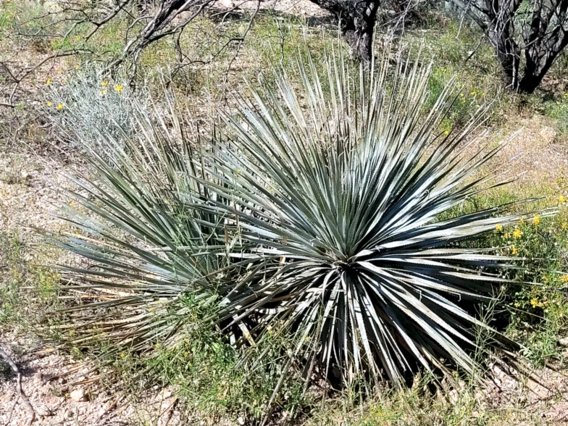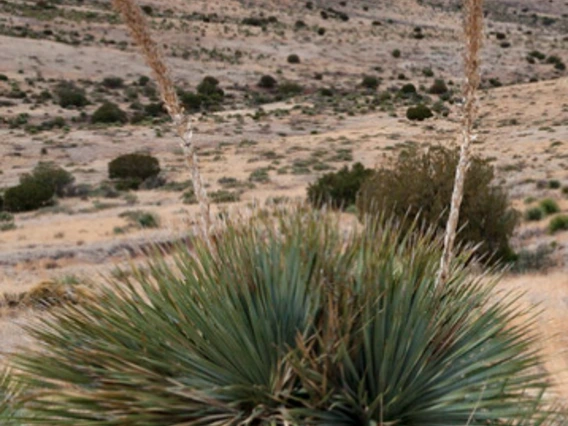Family: Asparagaceae
Compound: Das whe
Geographic Origin: SW US, N MX
Characteristics: An evergreen plant which typically grows to a height and width of 1.5m (5ft). Its leaves are long, flattened, and often blue green with reddish-brown spines along the margins which point backwards in the direction of the leaf base giving them a barbed appearance. The leaves are rigid, and end with fibrous tufts. This plant can be easily recognized by its tall, 4.5m (15ft), stalks which form in late spring and last through summer before drying out. The stalks may stay on the plant for years. Creamy tan flowers grow densely upon the stalk bearing creamy white flowers on a branched inflorescence structure. When pollinated, clusters of small fruits replace the blooms, and these capsules eventually dry and split to disperse seeds.
Natural History: A long-lived plant, found at elevations of 915-1828m (3000-6000ft) on rocky slopes and bajadas. Old flower stalks are frequently used by native solitary bees which cut holes in the hard outer walls and excavate burrows in the soft inner material.
Cultivation Notes: Easily propagated from seeds. Grows from late spring to summer and does not require many supplemental waterings once established. Supplemental waterings in summer will, however, increase growth. The old flower spikes can be removed if desired, but this is not recommended because of their importance to wildlife, native bees especially. Full sun and well-drained soil are preferred.
For general plant propagation information, click here
Ethnobotany: Valued by indigenous peoples for its fibrous leaves. These leaf fibers can be used to make baskets, sleeping mats, as cordage for sewing cattail mats, and for tying saplings together to use in house construction. The heart of the plant has been fermented to produce a liquor called sotol. This plant is also used in modern landscapes due to its drought tolerance and visual appeal.
Citations:
Starr, Greg. Starr Nursery. Personal Communication.
SEINet Arizona – New Mexico Chapter. Retrieved June 7, 2024.







